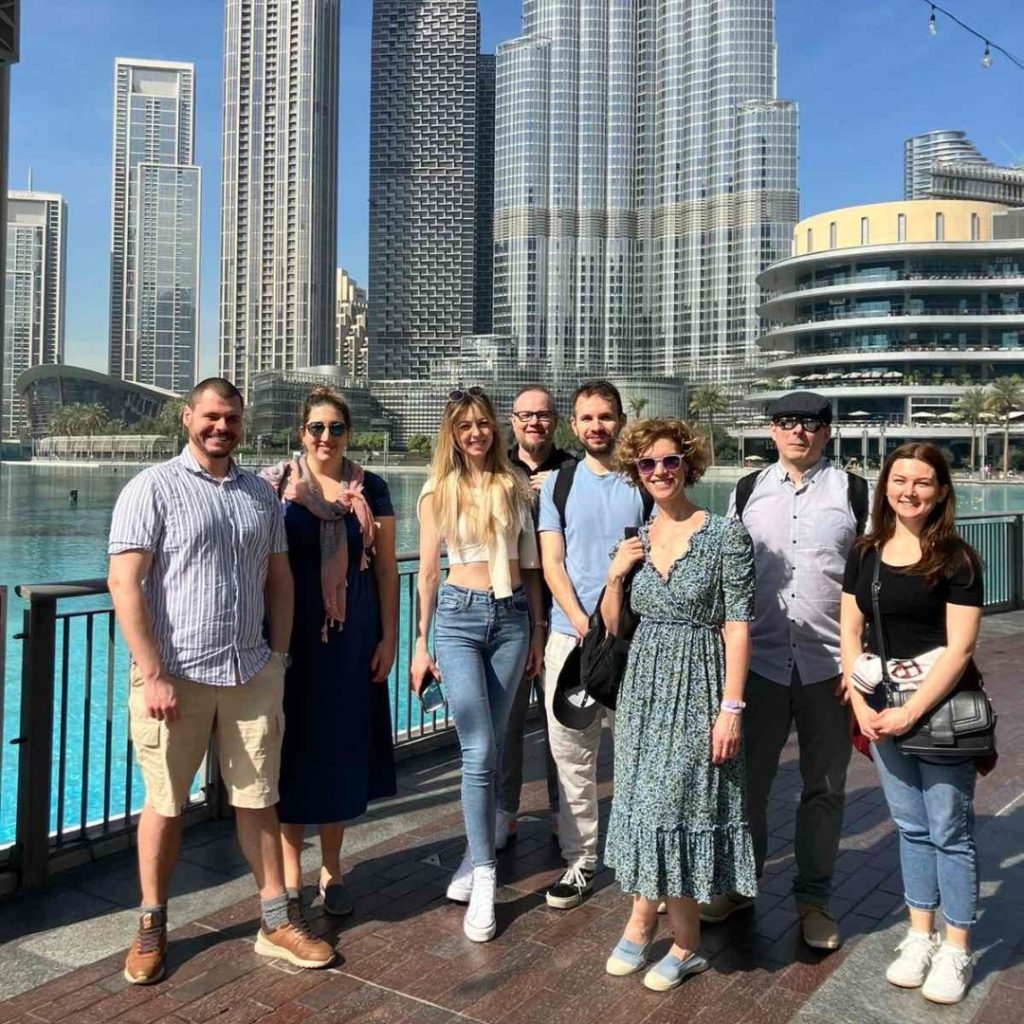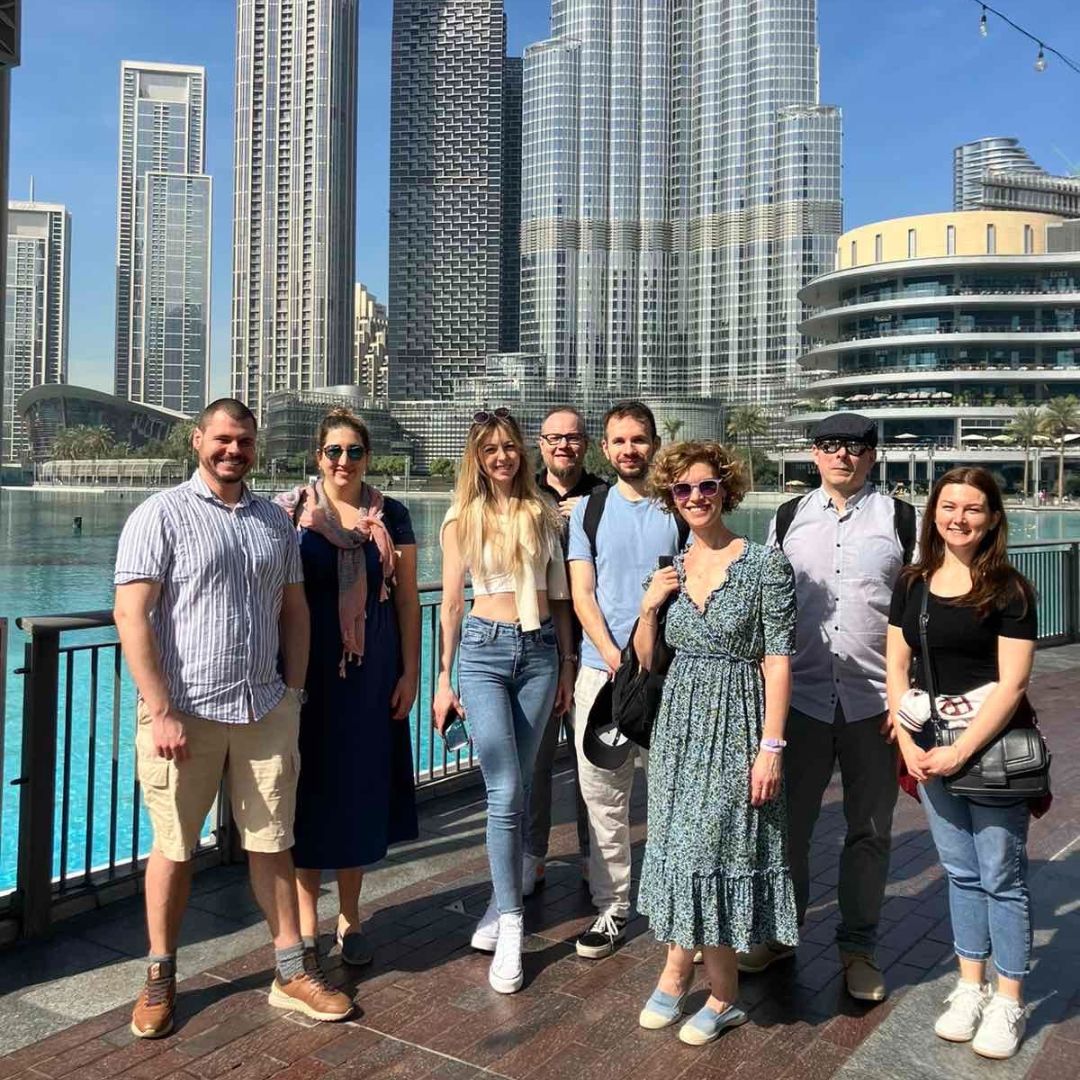5+1 Ways to Make Your Press Trip Not Just a Success — But a Story Worth Covering
Press trips are making a comeback. In today’s digital noise, there’s real value in a journalist not only hearing about a brand but actually experiencing it and writing about it from firsthand impressions. A well-planned trip inspires, builds relationships, and results in coverage that feels both authentic and engaging. But for a journalist to take notice of your invitation — and for everything to run smoothly once they do — you’ll need a compelling story, thoughtful preparation, and plenty of attention to detail.
At PRBK, we’ve organized dozens of press trips over the years, and we’ve learned the difference between a simple event and a true experience. The latter is what makes journalists say yes and what leads to articles readers will enjoy long after the trip is over.
- FIND YOUR WOW FACTOR
Before planning a press trip, ask yourself one key question: What’s the one thing journalists can get here that they can’t get anywhere else? Editorial teams receive several invitations a week, so you’ll need to offer something genuinely special, something that feels like a once-in-a-lifetime experience worth the journey.
If you’re hosting a high-profile conference or launch, that’s a natural draw. Otherwise, think about exclusivity: access to a key spokesperson who rarely gives interviews, a remarkable location, or an unexpected experience. A great press trip isn’t about how much you spend, it’s about the story you tell.
- BE TRANSPARENT ABOUT MONEY
Money talk can get awkward fast, unless you set expectations clearly from the start. Don’t begin planning until you know exactly what’s covered in your budget, and communicate it upfront in the invitation: travel, accommodation, meals, activities — and what isn’t included.
Clear communication saves time and prevents confusion. Transparency isn’t just polite; it builds trust. Journalists are far more likely to accept when they know exactly what they’re signing up for.
- KEEP IT RELAXED, BUT RUN IT LIKE A PRO
A press trip isn’t a holiday, but it shouldn’t feel like a rigid press conference either. The best trips strike the right balance between information and experience.
The magic formula? Everything feels effortless, even though it’s backed by meticulous planning. Guests should sense flow, not control. That’s why involving a PR agency can make all the difference. We spot details others miss, coordinate logistics, and act as a bridge between your brand and the media.
If the schedule includes free time, we ask in advance what the journalists would like to do. Maybe there’s a local attraction they’re curious about, or perhaps they’d prefer quiet time to work. Whether it’s arranging tickets, finding a workspace, or tagging along for a city walk — we make it happen.
- ALWAYS HAVE A PLAN B (AND KEEP YOUR COOL)
Like any live event, press trips don’t always go to plan. Rain can ruin outdoor programs, a speaker might cancel, or an interviewee could fall ill. Always prepare backup options so that a quick pivot doesn’t derail the experience.
Once in Barcelona, for example, our flight was delayed by nine hours due to heavy rain. With three journalists in tow, we turned a potential disaster into a spontaneous “welcome dinner” at the airport — making the best of it while waiting for takeoff.
- HONEST COMMUNICATION AND PREPARATION ARE EVERYTHING
Open, two-way communication is the backbone of a successful press trip. Journalists should know what to expect and you should know what to expect from them.
Beforehand, discuss how they plan to cover the topic, in what format, and ensure expectations align. Prepare them as you would your speakers: send the full schedule, a list of potential interviewees, background materials, and contact details. This helps them work efficiently and ensures your key messages land accurately.
Success comes from clarity upfront and from staying available throughout the trip.
+1 FOLLOW UP — THE TRIP DOESN’T END WHEN THE PLANE LANDS
A press trip doesn’t finish the moment everyone heads home. Support your journalists afterward with useful assets: on-site photos, extra quotes, or data that didn’t make it into the original press kit. It’s not pushy, it’s considerate.
A great press trip isn’t just a PR event. It’s a shared experience that creates real connection. When journalists feel valued, supported, and inspired, they’ll not only write better stories, they’ll want to travel with you again.
We believe a successful press trip isn’t about the logistics. It’s about the story and the experience you create together.
If you want your next trip to turn into inspiring coverage, authentic storytelling, and long-term media relationships, we’re here to help — from concept to execution.





